State of Minnesota vs. Max Mason. Case No. 22590. 1921-1922. Appellant's Brief.
Images
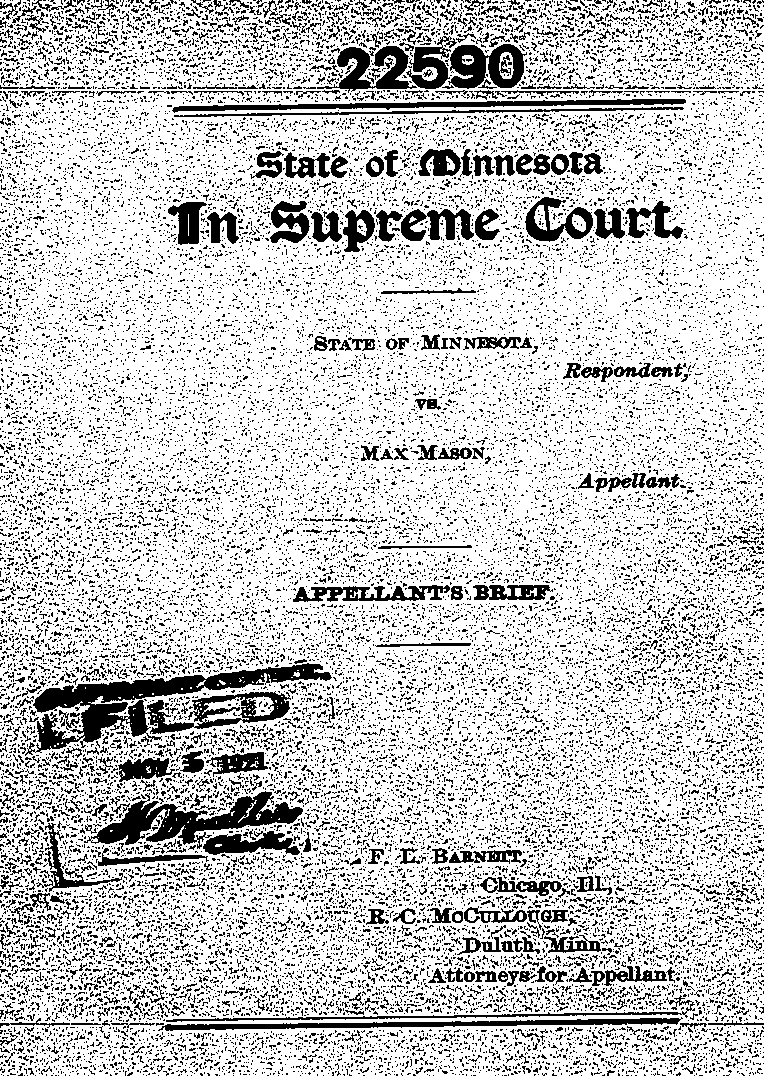

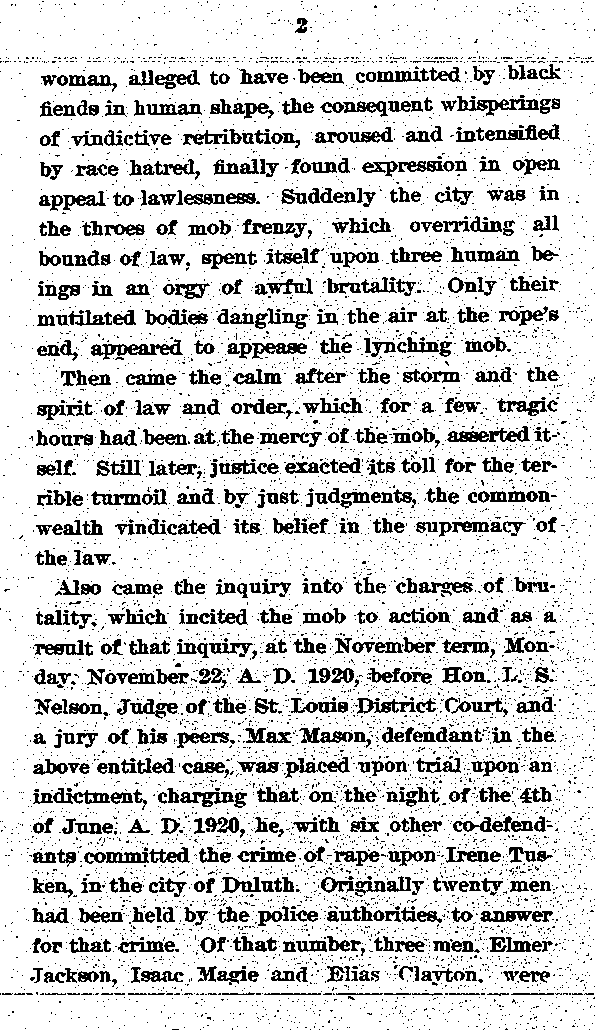

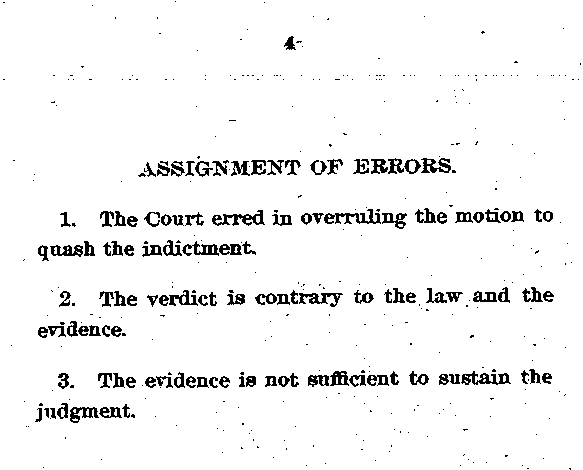
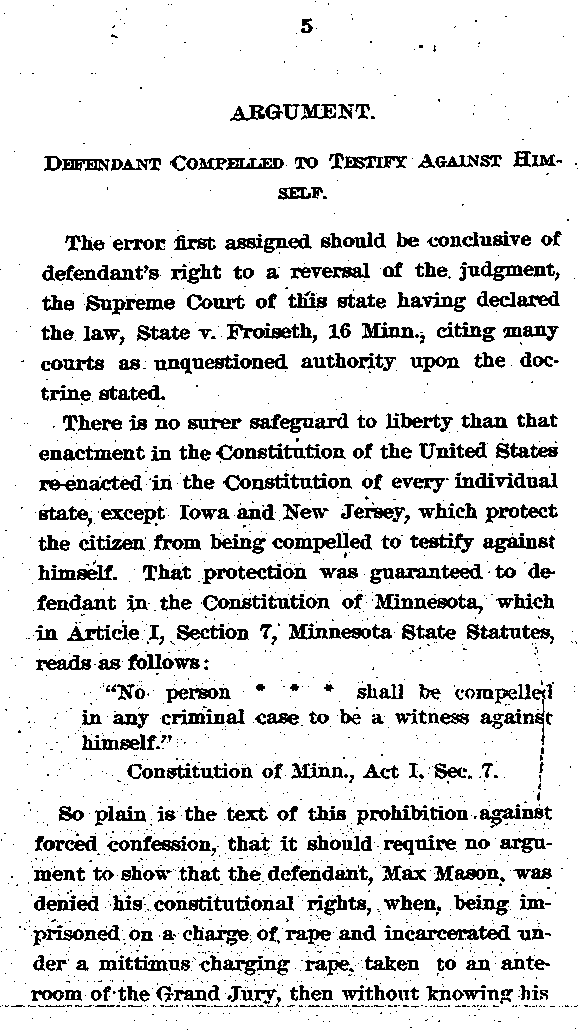
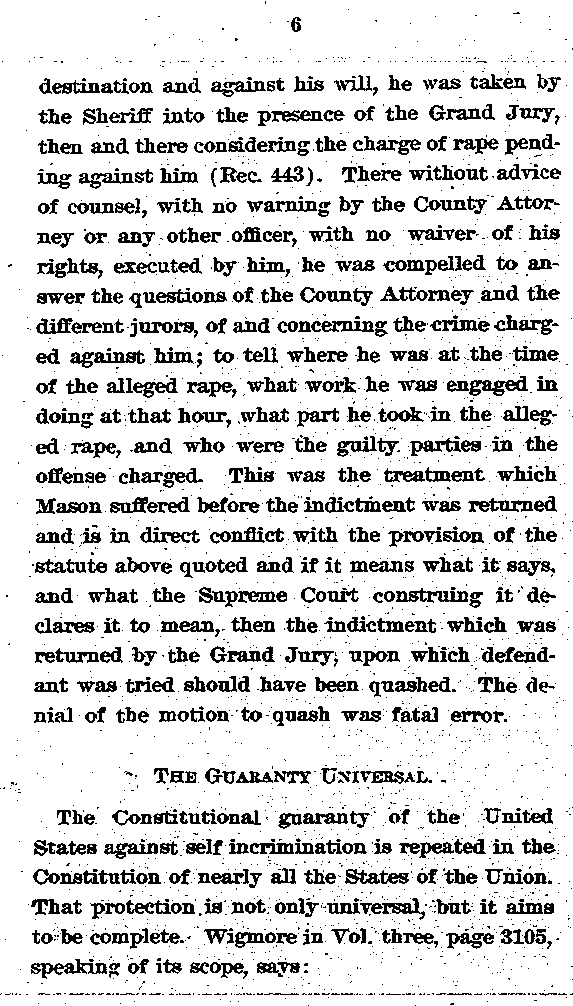
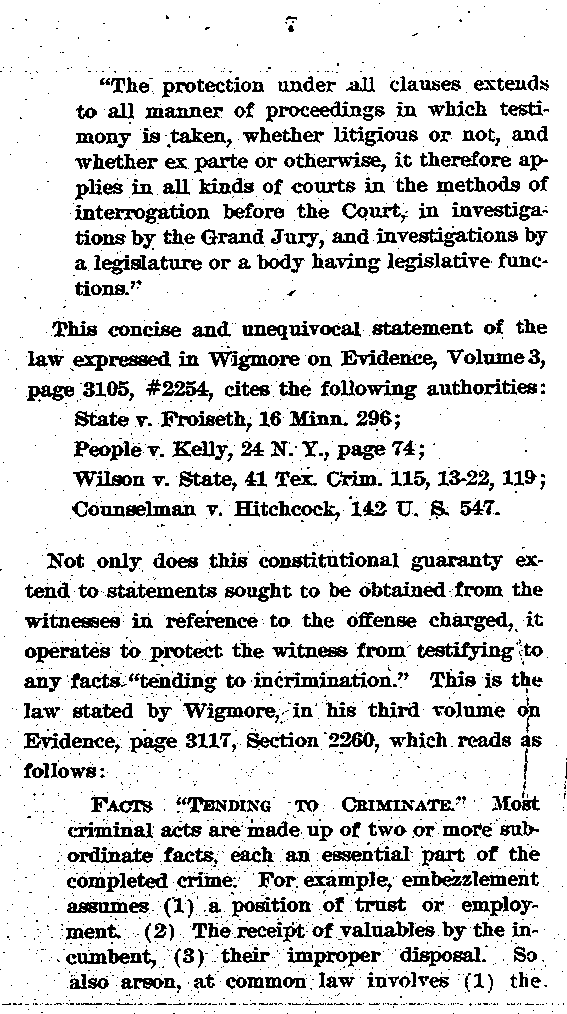

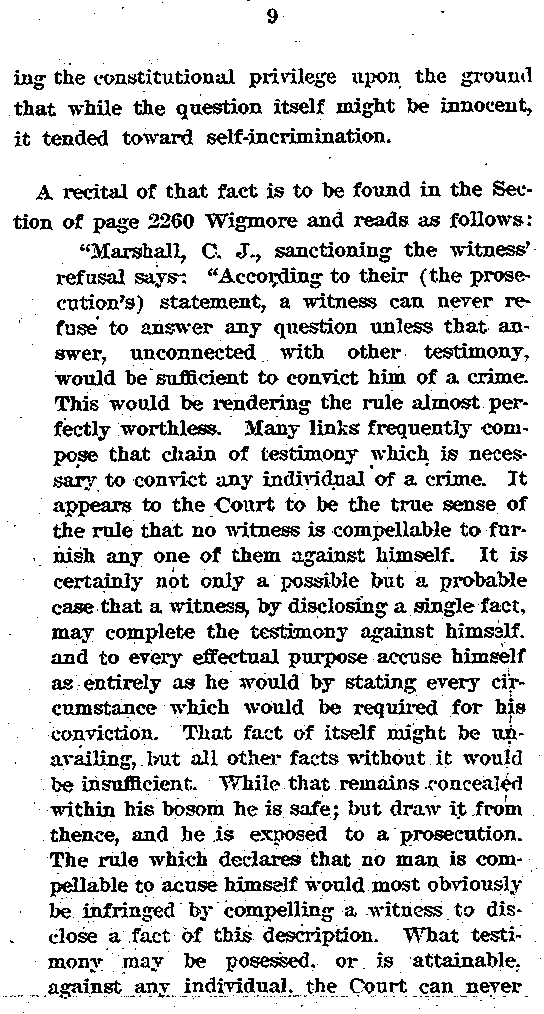
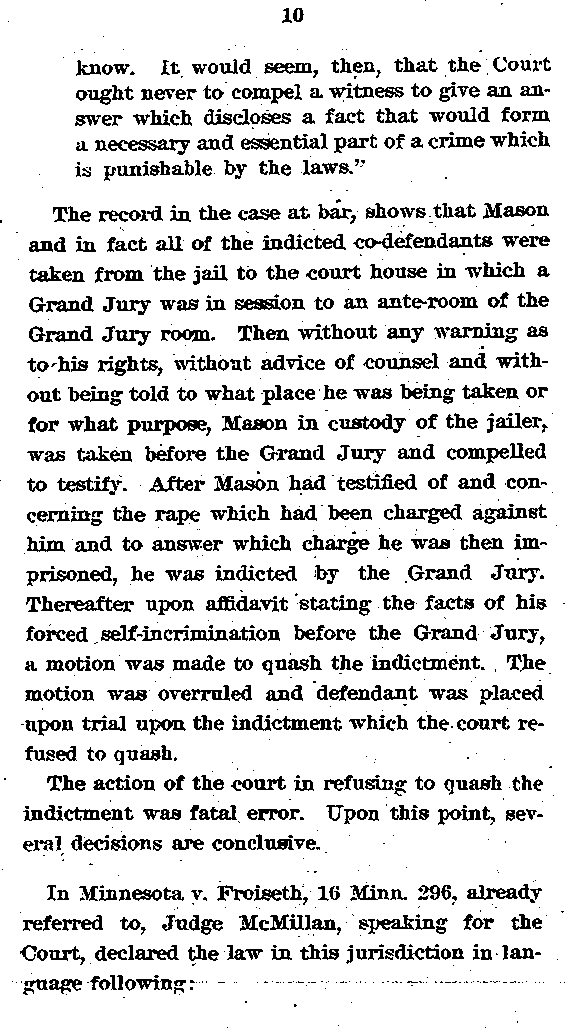
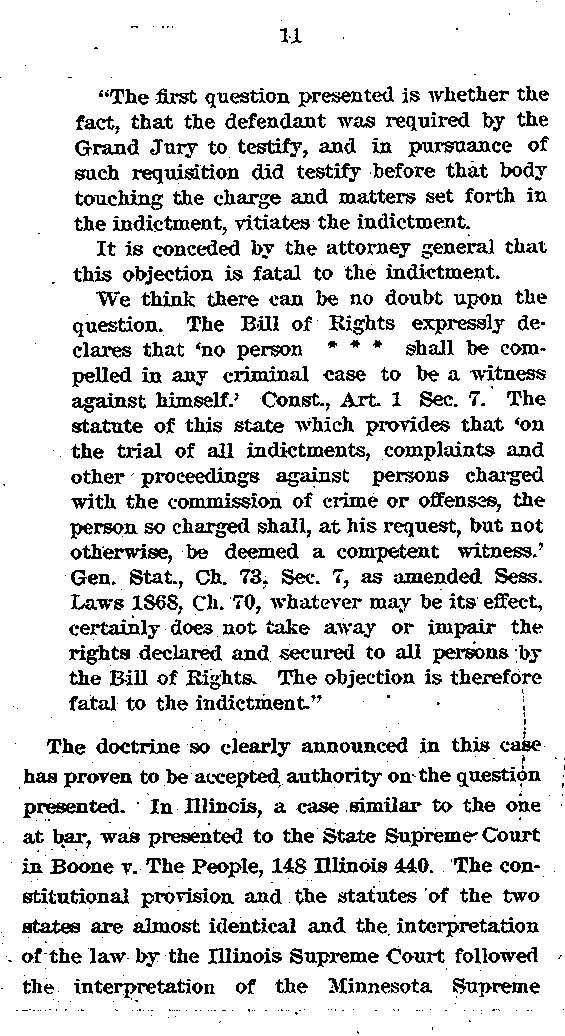
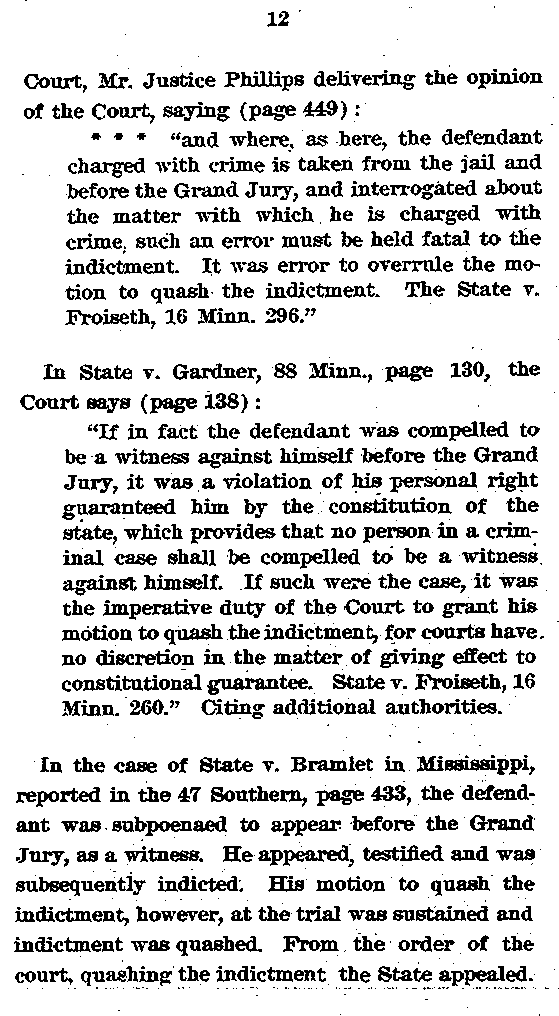




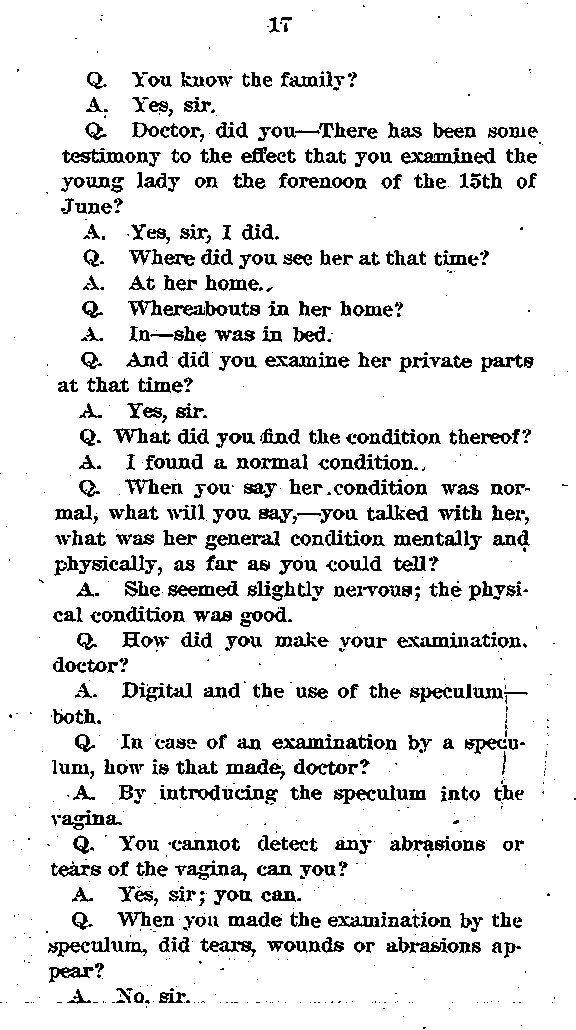


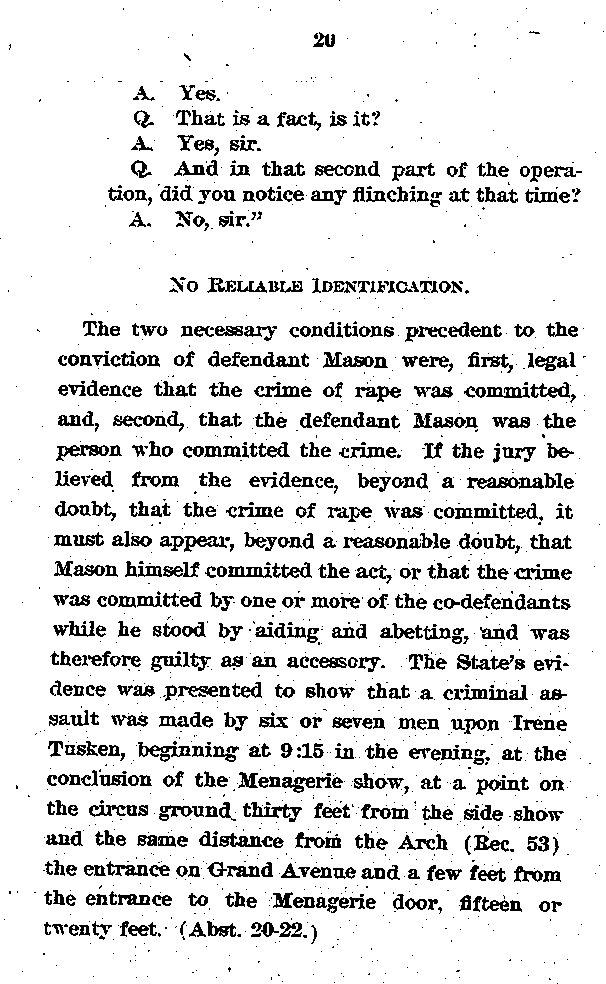
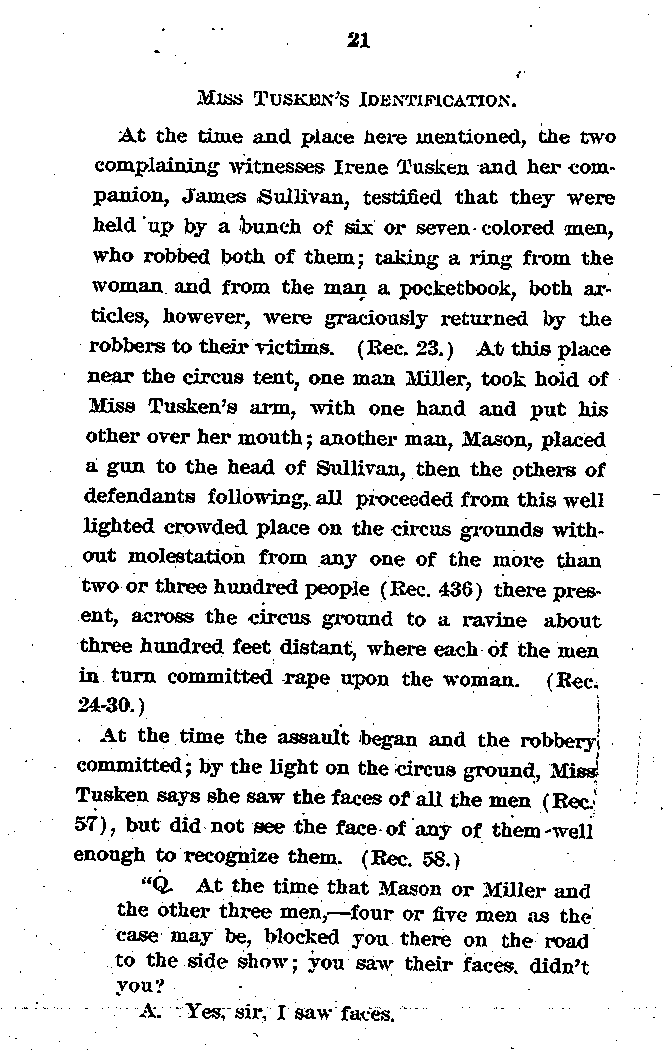
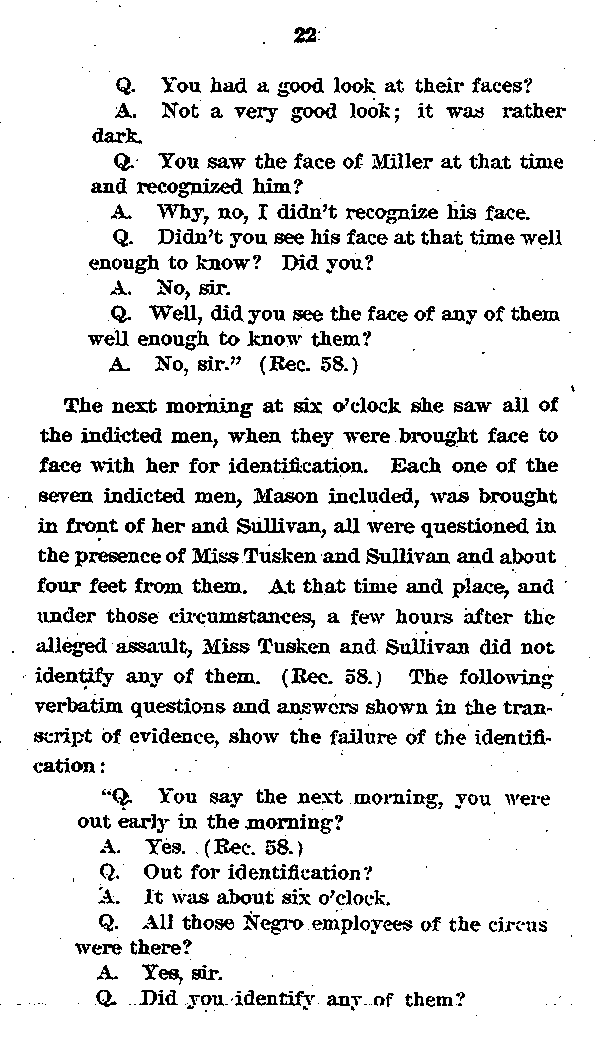
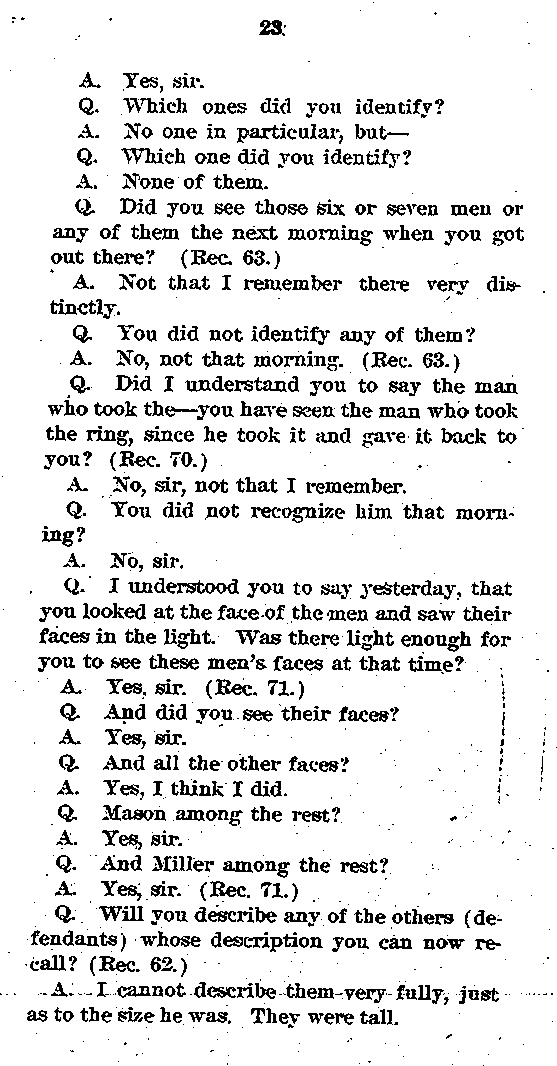
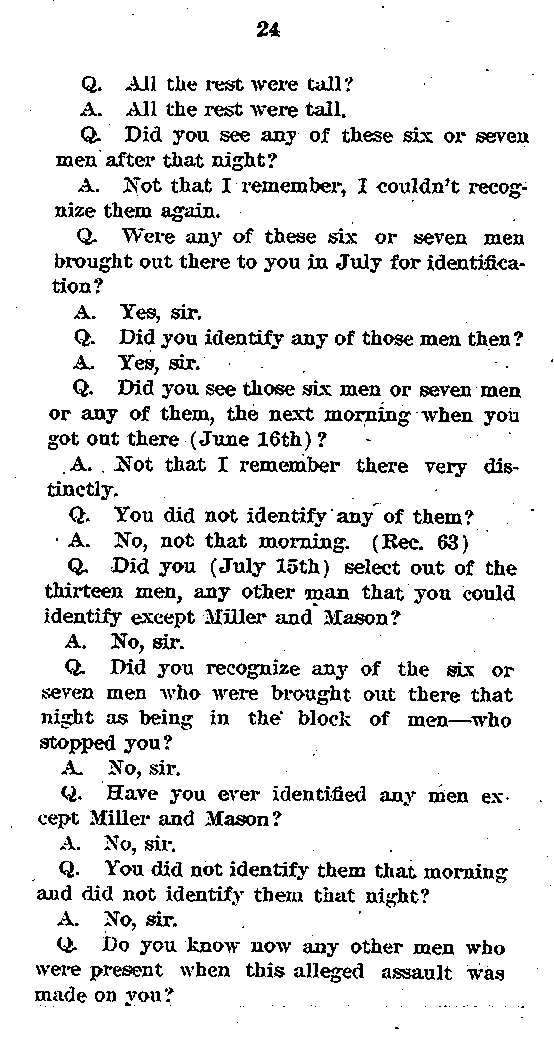

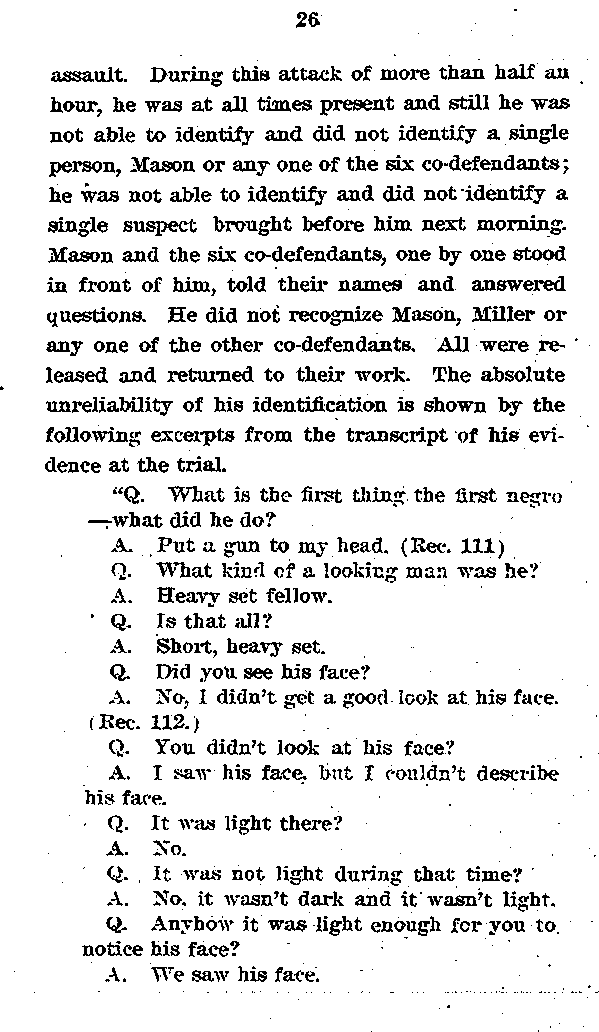


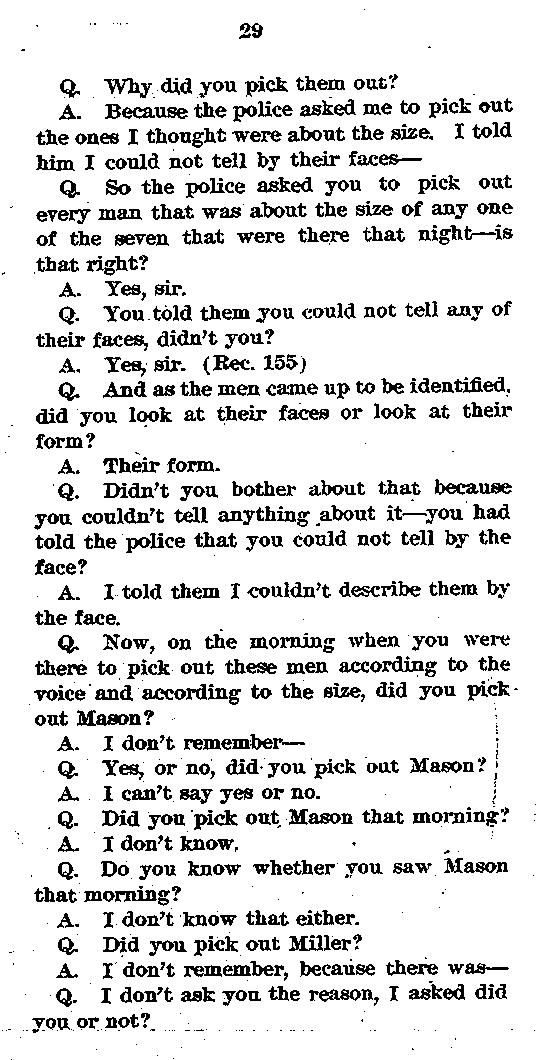
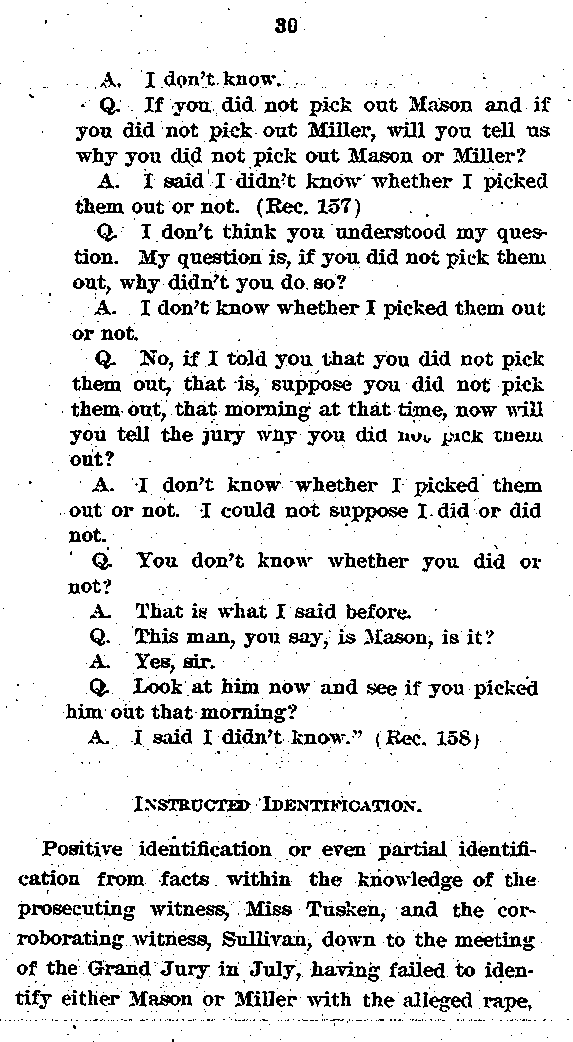

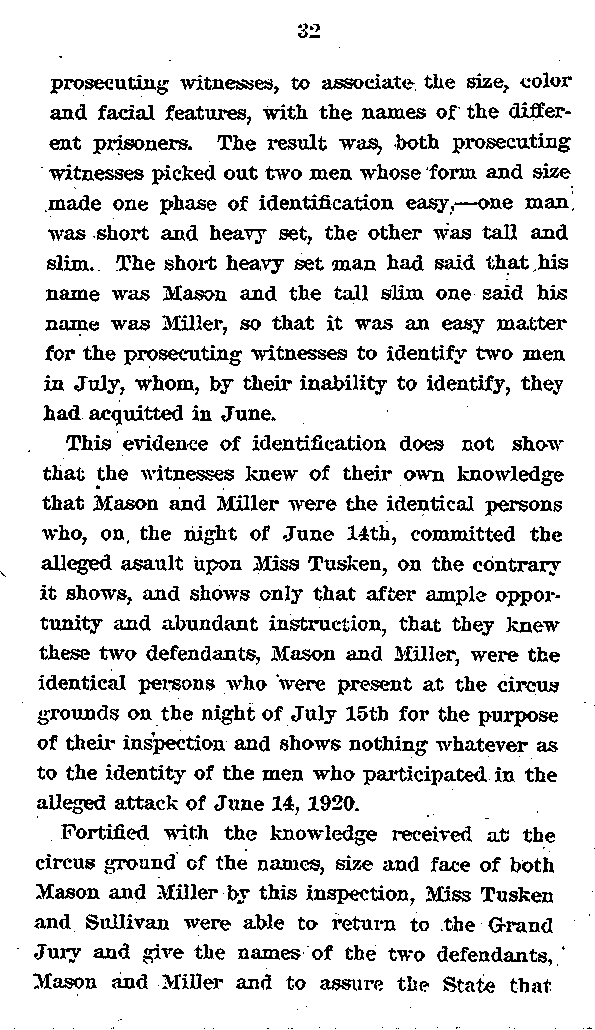

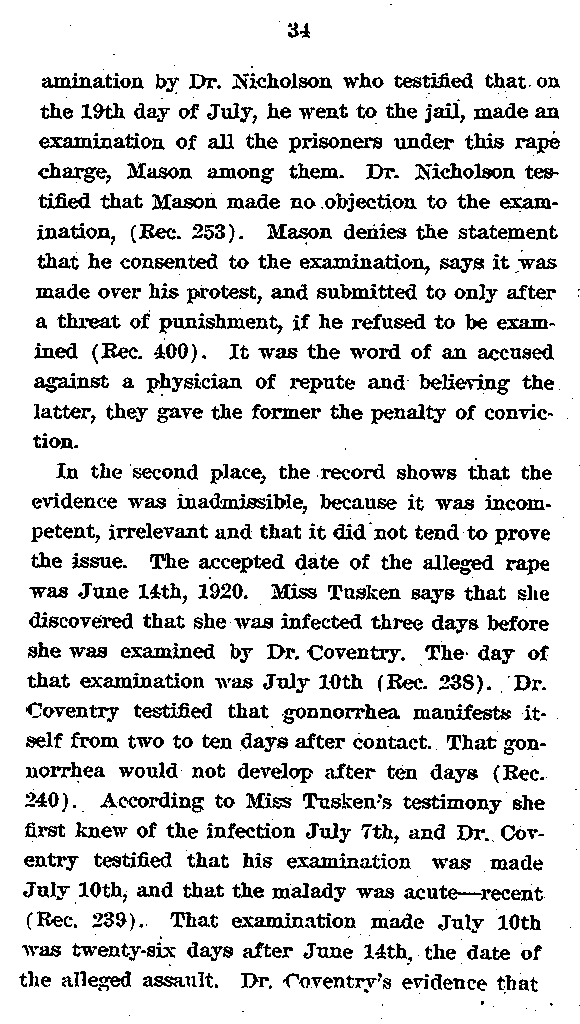

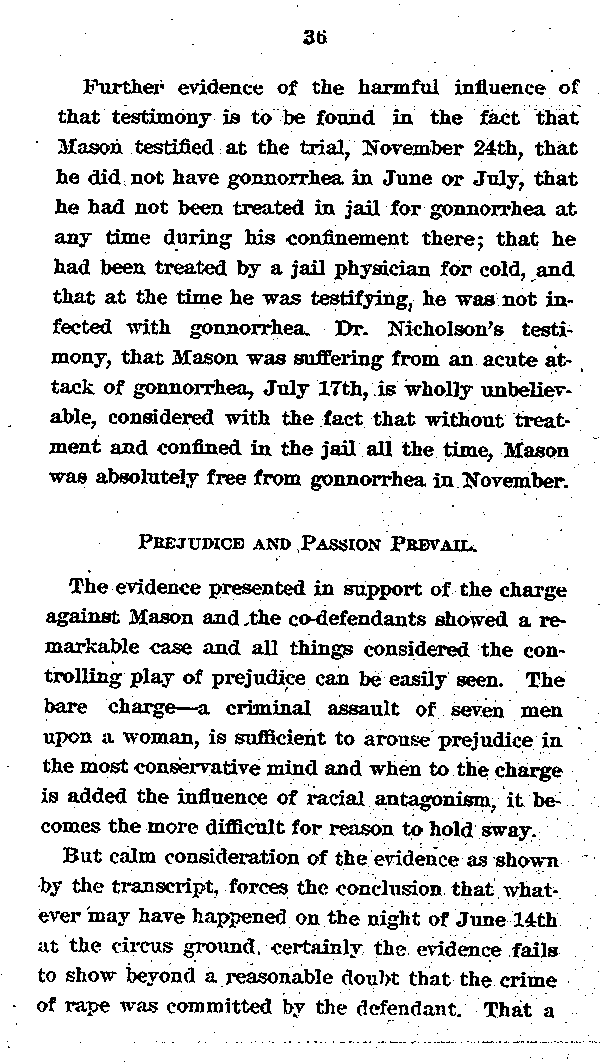
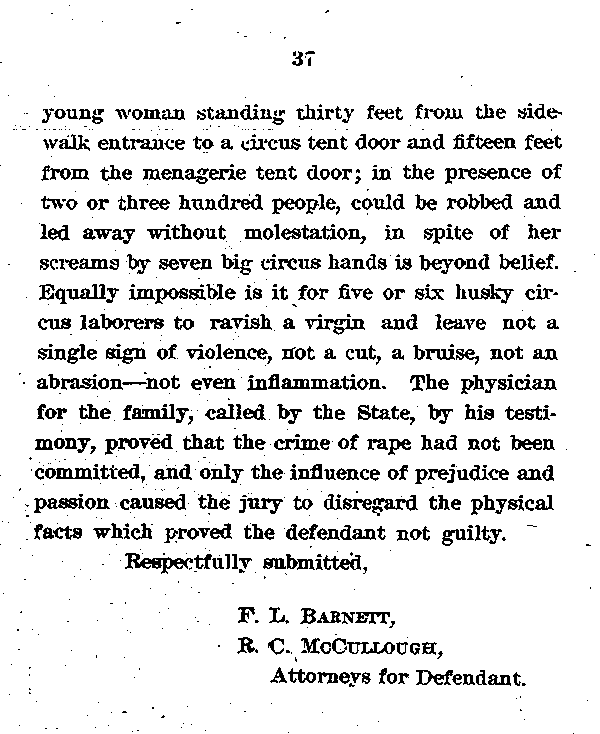
Image text
22590
_____________________________
State of Minnesota
In Supreme
Court.
______________
State of
Minnesota,
Respondent,
vs.
Max Mason,
Appellant.
______
APPELLANT’S
BRIEF
______
F. L. BARNETT
Chicago, Ill,
R. C. McCULLOUGH,
Duluth, Minn.
Attorneys for Appellant.
_______________________________________
State of Minnesota
In Supreme
Court.
______________
State of
Minnesota,
Respondent,
vs.
Max Mason,
Appellant.
______
APPELLANT’S
BRIEF
______
THE CASE STATED.
The 16th of June, 1920, was an eventful day in the peaceable, law-abiding city of Duluth, Minn., for on that day the rule of reason failed, giving way to anarchy and bloodshed. Wild rumors of an unspeakable outrage upon a young white
2
woman, alleged to have been committed by black fiends in human shape, the consequent whisperings of vindictive retribution, aroused and intensified by race hatred, finally found expression in open appeal to lawlessness. Suddenly the city was in the throes of mob frenzy, which overriding all bounds of law, spent itself upon three human beings in an orgy of awful brutality. Only their mutilated bodies dangling in the air at the rope's end, appeared to appease the lynching mob.
Then came the calm after the storm and the spirit of law and order, which for a few tragic hours had been at the mercy of the mob asserted itself. Still later justice exacted its toll for the terrible turmoil and by just judgments, the commonwealth vindicated its belief in the supremacy of the law.
Also came the inquiry into the charges of brutality, which incited the mob to action, and as a result of that inquiry, at the November term, Monday, November 22, A. D. 1920, before Hon. L. S. Nelson, Judge of the St. Louis District Court, and a jury of his peers. Max Mason, defendant in the above entitled case, was placed upon trial upon an indictment, charging that on the night of the 4th [sic] of June A. D. 1920, he, with six other co-defendants committed the crime of rape upon Irene Tusken, in the city of Duluth. Originally twenty men had been held by the police authorities, to answer for that crime. Of that number, three men, Elmer Jackson, Isaac Magie [sic] and Elias Clayton were
3
hanged by the mob (Exhibit C, Rec. 228). Seven of those first arrested were discharged at eleven o'clock the day of the lynching, (Rec. 214) so that finally when quiet was in a measure restored, thirteen alleged rapists remained in the Duluth jail.
The Grand Jury inquiry resulted in the failure of the authorities to connect seven of the imprisoned men with any offense and they were discharged. Seven men were indicted and all remained in jail until the conclusion of the trial of William Miller, who was found not guilty, after which the indictments against the four other men were nolle possed. For the many vital errors manifest upon the record, the defendant, Max Mason, prays a reversal of the judgment by which he is imprisoned in the a penitentiary for a term of seven to thirty years.
4
ASSIGNMENT OF ERRORS.
1. The Court erred in overruling the motion to quash the indictment.
2. The verdict is contrary to the law and the evidence.
3. The evidence is not sufficient to sustain the judgment.
5
ARGUMENT.
DEFENDANT COMPELLED TO TESTIFY AGAINST HIMSELF.
The error first assigned should be conclusive of defendant's right to a reversal of the judgment, the Supreme Court of this state having declared the law, State v. Froiseth, 16 Minn., citing many courts as unquestioned authority upon the doctrine stated.
There is no enter safeguard to liberty than that enactment in the Constitution of the United States re-enacted in the Constitution of every individual state, except Iowa and New Jersey, which protect the citizen from being compelled to testify against himself. That protection was guaranteed to defendant in the Constitution of Minnesota, which in Article I, Section 7, Minnesota State Statutes, reads as follows:
"No person * * * shall be compelled in any
criminal case to be a witness against himself."
Constitution of Minn., Act I. Sec. 7.
So plain is the text of this, prohibition against forced confession that it should require no argument to show that the defendant, Max Mason was denied his constitutional rights when, being imprisoned on a charge of rape and incarcerated under a mittimus charging rape taken to an anteroom of the Grand Jury, then without knowing his
6
destination and against his will, he was taken by the Sheriff into the presence of the Grand Jury, then and there considering the charge of rape pending against him (Rec. 443) . There without advice of counsel, with no warning by the County Attorney or any other officer, with no waiver of his rights, executed by him, he was compelled to answer the questions of the County Attorney and the different jurors, of and concerning the crime charged against him; to tell where he was at the time of the alleged rape, what work he was engaged in doing at that hour, what part he took in the alleged rape, and who were the guilty parties in the offense charged. This was the treatment which Mason suffered before the indictment was returned and as in direct conflict, with the provision of the statute above quoted and if it means what it says, and what the Supreme Court construing it declares it to mean, then the indictment which was returned by the Grand Jury, upon which defendant was tried should have been quashed. The denial of the motion to quash was fatal error.
THE GUARANTY UNIVERSAL.
The Constitutional guaranty of the United States against self incrimination is repeated in the Constitution of nearly all the States of the Union. That protection is not only universal but it aims to be complete. Wigmore in Vol. three, page 3105, speaking of its scope, says:
7
"The protection under all clauses, extends to all
manner of proceedings in which testimony is
taken, whether litigious or not, and whether ex
parte or otherwise, it therefore applies in all kinds of
courts in the methods of interrogation before the Court, in investigations by the Grand Jury, and investigations by a legislature or a body having legislative functions.”
This concise and unequivocal statement of the law expressed in Wigmore on Evidence, Volume 3, page 3105, #2254, cites the following authorities:
State v. Froiseth, 16 Minn. 296;
People v. Kelly, 24 N. Y., page 74;
Wilson v. State, 41 Tex. Crim. 115, 13-22, 119;
Counselman v. Hitchcock, 142 U. S. 547.
Not only does this constitutional guaranty extend to statements sought to be obtained from the witnesses in reference to the offense charged, it operates to protect the witness from testifying to any facts "tending to incrimination." This is the law stated by Wigmore, in 'his third volume on Evidence, page, 3117, Section 2260, which reads, as follows:
FACTS "TENDING TO CRIMINATE." Most criminal acts are made up of two or more subordinate facts, each an essential part of the completed crime. For. example; embezzlement assumes (1) a position of trust, or employment. (2) The receipt of valuables by the incumbent, (3) their improper disposal. So also arson at common law involves (1) the
8
existence of a structure, (2) its use as a dwelling,
(3) the setting fire by the accused, (4) a destruction
of some part of the structure. Again, forgery by
utterance involves, (1) possession by the accused,
(2) a certain kind of document, (3) false in its
nature, and (4) it's transfer to another person. In all
these instances, no one of the component facts
constitutes of itself the crime, and yet every one of
them must be established in order to establish the
crime. It is therefore obvious that unless the
privilege is to remain an empty formula easily
evaded, it's protection must extend to each one of
these facts taken separate as well as to the general
whole. It would be immaterial whether the evasion
consisted in obtaining from the witness himself all
these component facts by separate inquiry, or in
obtaining one such fact by inquiry of himself and
the remainder by other proof; the difference would
be merely in the quantity of evasion; for it would be
the witness' own disclosure which still would be
essential to complete the proof, and his own disclosure would thus essentially involve a crimination fact.
Such and no more is the orthodox traditional doctrine that the privilege covers facts which even "tend to criminate."
Illustrative of the law, thus stated, reference is made by the author, to the trial of Aaron Burr,1807, during which trial the prosecutor placed before the witness who had been secretary to Burr, a decipher letter and asked him, "Do you understand the contents of that paper?" Counsel for 'Burr objected and the witness refused to answer, claim
9
ing the constitutional privilege upon the ground that while the question itself might be innocent, it tended toward self-incrimination.
A recital of that fact is to be found in the Section of page 2260 Wigmore and reads as follows:
"Marshall, C. J., sanctioning the witness'
refusal says: "According to their (the prosecution's)
statement, a witness can never refuse to answer any question unless that answer, unconnected with other testimony, would be sufficient to convict him of a crime. This would be rendering the rule almost perfectly worthless. Many links frequently compose that chain of testimony which is necessary to convict any individual of a crime. It appears to the Court to be the true sense of the rule that no witness is compellable to furnish any one of them against himself. It is certainly not only a possible but a probable case that a witness, by disclosing a single fact, may complete the testimony against himself, and to every effectual purpose accuse himself as entirely as he would by stating every circumstance which would be required for his conviction. That fact of itself might be unavailing, but all other facts without it would be insufficient. While that remains concealed within his bosom he is safe; but draw it from thence, and he is exposed to a prosecution. The rule which declares that no man is compellable to accuse himself would most obviously be infringed by compelling a witness to disclose a fact of this description. What testimony may be possessed, or is attainable, against any individual the Court can never
10
know. It would seem, then, that the Court ought never to compel a witness to give an answer which discloses a fact that would form a necessary and essential part of a crime which is punishable by the laves."
The record, in the case at bar, shows that Mason and in fact all of the indicted co-defendants were taken from the jail to the court house in which a Grand Jury was in session to an anteroom of the Grand Jury room. Then without any warning as to his rights, without advice of counsel and without being told to what place he was being taken or for what purpose, Mason in custody of the jailer, was taken before the Grand Jury and compelled to testify. After Mason had testified of and concerning the rape which had been charged against him and to answer which charge he was then imprisoned, he was indicted by the Grand Jury. Thereafter upon affidavit stating the facts of his forced self-incrimination before the Grand Jury, a motion was made to quash the indictment. The motion was overruled and defendant was placed upon trial upon the indictment which the court refused to quash.
The action of the court in refusing to quash the indictment was fatal error. Upon this point, several decisions are conclusive.
In Minnesota v. Froiseth, 16 Minn. 296, already referred to, Judge McMillan, speaking for the Court, declared the law in this jurisdiction in language following:
11
"The first question presented is whether the fact, that the defendant was required by the Grand Jury to testify, and in pursuance of such requisition did testify before that body touching the charge and matters set forth in the indictment, vitiates the indictment.
It is conceded by the attorney general that this objection is fatal to the indictment.
We think there can be no doubt upon the question. The Bill of Rights expressly declares, that 'no person * * * shall be compelled in any criminal case to be a witness against himself.' Const., Art. 1 Sec. 7. The statute of this state which provides that ‘on the trial of all indictments, complaints and other, proceedings against persons charged with the commission of crime or offenses, the person so charged shall, at his request, but not otherwise, be deemed a competent witness.' Gen. Stat., Ch. 73; Sec. 7, as amended Sess. Laws 1868, Ch. 70, whatever may be its effect, certainly does , not take away or impair the rights declared and secured to all persons by the Bill of Rights. The objection is therefore fatal to the indictment."
The doctrine so clearly announced in this case has proven to be accepted authority on the question presented. In Illinois, a case similar to the one at bar, was presented to the State Supreme Court in Boone v. The People, 145 Illinois 440. The constitutional provision and the statutes of the two states are almost identical and the interpretation of the law by the Illinois Supreme Court followed the interpretation of the Minnesota Supreme
12
Court, Mr. Justice Phillips delivering the opinion of the Court, saying (page 449):
* * * "and where, as here, the defendant charged
with crime is taken from the jail and before the
Grand Jury, and interrogated about the matter with
which he is charged with crime, such an error must
be held fatal to the indictment. It was error to
overrule the motion to quash the indictment. The
State v. Froiseth, 16 Minn. 296."
In State v. Gardner, 88 Minn., page 130, the Court says (page 138):
“If in fact the defendant was compelled to be a witness against himself before the Grand Jury, it was a violation of his personal right guaranteed him by the constitution of the state, which provides that no person in a criminal case shall be compelled to be a witness against himself. If such were the case, it was the imperative duty of the Court to grant his motion to quash the indictment, for courts have no discretion in the matter of giving effect to constitutional guarantee. State v. Froiseth, 16 Minn. 260." Citing additional authorities.
In the case of State v. Bramlet in Mississippi, reported in the 47 Southern, page 433, the defendant was subpoenaed to appear before the Grand Jury, as a witness. He appeared, testified and was subsequently indicted. His motion to quash the indictment, however, at the trial was sustained and indictment was quashed. From the order of the court, quashing the indictment the State appealed.
13
The Supreme Court sustained the action of the lower court in quashing the indictment.
NO CRIME PROVEN.
The most casual study of the evidence shows that the State absolutely failed to prove that the crime of rape was committed. Not a word of direct evidence is sown in the record, because the prosecuting witness—the victim of alleged rape, testified that she was unconscious from the time she was thrown to the ground, she could not testify and did not testify whether or not there was penetration. No one testified that there was penetration, the only evidence tending to prove penetration, offered by the State, was entirely circumstantial and was confined to the evidence of Sullivan, who after testifying that he was ten feet away, back of the men in the alleged assault, said:
"I saw one of them get on top of her at a time and he would leave and another would get on. The dresses were pulled up." Record page 93.
He said that later, "the man that, had been holding the gun to my head, defendant Mason, went and got on top of the girl," remaining there about three minutes.'' Page 94. Witness continues, '"He came back and took the gun from the fellow that was holding it to my head at that time and that fellow (co-defendant Miller) went and got on top of the girl, and the girl happened to come to then
14
and raised up. I don't know, he changed his mina or something and he got off." (Rec. 95).
These sentences contain the entire evidence of a direct nature tending to prove that at the time of the alleged assault, there was actual penetration. He says that six of the accused men got on top of the girl and then got off. That is the direct evidence offered by the State to prove rape. Of the six men, four were discharged from the indictment upon motion of the County Attorney, and Miller, who was identified as positively as Mason, upon almost the same evidence adduced at the Mason trial, was found not guilty.
To supply the plain deficiency of direct proof of penetration the State offered the evidence of Mrs. Tusken, the mother, who being questioned by County Attorney, as to Miss Tusken's condition, immediately afterwards testified, "'Well, she was hysterical and nervous." Considering the fact, that the story told by her and Sullivan had caused a riot during which a mob with indescribable brutality hanged three innocent men, it is no wonder that she was hysterical and nervous. As to her physical condition, necessarily resulting from rape, she volunteered no complaint.
"Well, I asked her how she felt and she says, she ached all over." Page 185.
Mr. W. E. Tusken, the father, also testified in answer to the inquiry of County Attorney Green, as to her condition that "She was nervous and excited and hysterical and exhausted."' Rec. 190.
15
“Did she make any complaint about soreness?
A. No, she did not to me."
From this record, it is seen that the only evidence of penetration was the statement of Sullivan as to what he saw the six defendants do. This the State claims was proof of rape. The inference that rape was committed is negatived by the following facts:
1. There was no evidence on the part of the prosecuting witness that she knew there had been penetration.
2. That no evidence of a drop or stain of blood upon the body of the prosecuting witness or a stain of seminal laid upon her clothing.
3. That she never complained to her mother of any wound, injury or soreness to the sexual organs.
4. That she never complained of any soreness to her father.
5. That after the alleged rape, she walked five blocks in company with Sullivan, sat on the steps of a school house about five or ten minutes, (Rec. 320) and talked with him, took the car and rode toward home, walking three blocks more and talked with him about a half hour after she arrived there, passed her father who was reading the daily paper in the parlor without saying anything to him, except, "I am going to bed". (Rec. 187)
16
That she was asleep at one o'clock (Rec. 188) when her father heard Sullivan's story of the alleged rape. That she went with her father to the police station at two o'clock, (Rec. 189) went back home and later went to the Canadian Northern yards at five o'clock that morning to identify the men and was there until seven o'clock that morning, (Rec. 190), when she returned home. During all this time, there is no evidence that she complained to any person of any physical injury, naturally resulting from rape. Indication of her condition when she arrived home immediately after the alleged rape, the record (page 182) shows that her mother testified:
"Q. Had you seen your daughter the night before. June 14th?
A. Well, I had gone to bed, but she stopped at my door and she says, 'Mamma, I met Jimmie tonight and w e went to the circus.' I says `all right, dear, go to bed now.' And she went to her room."
Later, during the morning of June 15th Miss Tusken went to bed and Dr. Graham, the family physician; was called to examine her about ten o'clock. His testimony shows without the slightest doubt, that there was no rape. In his testimony as witness for the state (Rec. 233 and later for defendant, Rec. 356) there appears the following evidence:
“Q. Dr. Graham, you know the young lady, Miss Tusken?
A. Yes, sir.
17
Q. You know, the family?
A. Yes, sir.
Q. Doctor, did you—There has been some testimony to the effect that you examined the young lady on the afternoon of the 15th of June?
A. Yes, sir, I did.
Q. Where did you see her at that time?
A. At her home.
Q. Whereabouts in her home?
A. In—she was in bed.
Q. And did you examine her private parts at that time?
A. Yes, sir.
Q. What did you find the condition thereof?
A. I found a normal condition.
Q. When you say her condition was normal, what will you say,--you talked with her, what war her general condition mentally and physically, as far as you could tell?
A. She seemed slightly nervous; the physical condition was good.
Q. How did you make your examination doctor?
A. Digital and the use of the speculum—both.
Q. In case of an examination by a speculum, how is that made, doctor?
A. By, introducing the speculum into the vagina.
Q. You cannot detect any abrasions or tears of the vagina, can you?
A. Yes, sir, you can.
Q. When you made the examination by the speculum, did tears, wounds or
abrasions appear?
A. No, sir.
18
Q. And there was none there?
A. No, Sir. .
Q. When a digital examination is made;
that is by the use of the hand?
A. Yes, sir.
Q. In making a digital examination,
Does that or does it not test the sense of touch,
soreness and so forth?
A. Yes, sir.
Q. Did you make a digital examination?
A. Yes, sir.
Q. At that digital examination was there
any evidence of soreness or sensitiveness of injury?
A. No, sir. I made an examination of the girl, a vaginal examination with a speculum and a digital, as it is called with the finger. Found the girl clean looking in every way at that time. Does that include telling what was done?
Q. What was done? Yes.
A. Why, I used the speculum in the vagina; argyrol—a 25 % argyrol solution, wiping out
the vagina carefully.
Q. During the examination with the
speculum, did you then notice that there was,--were there any tears in the vagina?
A. No, Sir.
Q. Any abrasions?
A. No, sir.
Q. Were there any bruises?
A. No, sir.
Q. Was there any inflammation of the parts?
A. No, Sir.
Q. The digital examination, doctor, would that in the examination you made disclose any soreness?
19
A. It might.
Q. Was any soreness complained of?
A. No, sir.
Q. During that digital examination, doctor, if there was soreness or tenderness of the parts would that be disclosed by flinching?
A. Oh, it might be; some people do not flinch as easily as other people.
Q. In that case, did the patient flinch at all?
A. No, sir.
Q. The antiseptic used by you during that time, doctor, was that one of the standard treatments for prevention of infection?
A. I think so, yes.
Q. And you used it for that purpose?
A. Yes, sir.
Q. Doctor, will you say whether or not that treatment as you say, to prevent infection, if there had been a penetration, was that treatment thorough or casual?
A. It was thorough.
Q. How was that argyrol applied?
A. Cotton dipped in the argyrol.
Q. And in that, application did anything transpire by which you were compelled to use an additional digital—?
A. I did use additional—after taking out the speculum to make it more thorough, as the
speculum lays against the inside of the vagina. I did it without the speculum, in as well as with it in.
Q. And that cotton swab, did that ever come out at the time?
A. Yes, it came out when I pulled it out.
Q. Was that taken out in its original form or did some of the cotton come so you had to take it with your fingers?
20
A. Yes.
Q. That is a fact, is it?
A. Yes, sir.
Q. And in that second part of the
operation, did yon notice any
flinching at that time?
A. No, sir.
NO RELIABLE IDENTIFICATION
The two necessary conditions precedent to the conviction of defendant Mason, were, first, legal evidence that the crime of rape was committed, and, second, that the defendant Mason was the person who committed the crime. If the jury believed from the evidence, beyond a reasonable doubt, that the crime of rape was committed, it must also appear, beyond a reasonable doubt, that Mason himself committed the act, or that the crime was committed by one or more of the co-defendants while he stood by aiding and abetting, and was therefore guilty as an accessory. The State's evidence was presented to show that a criminal assault was made by six or seven men upon Irene Tusken, beginning at 9:15 in the evening, at the conclusion of the Menagerie show, at a point on the circus ground thirty feet from the side show and the same distance from the Arch. (Rec. 53) the entrance on Grand Avenue and a few feet from the entrance to the Menagerie door, fifteen or twenty feet. (Abst. 20-22.)
21
MISS TUSKEN'S IDENTIFICATION.
At the time and place here mentioned, the two complaining witnesses Irene Tusken and her companion, James Sullivan, testified that they were held up by a bunch of size or seven colored men, who robbed both of them; taking a ring from the woman, and from the man a pocketbook, both articles, however, were graciously returned by the robbers to their victims. (Rec. 23.) At this place near the circus tent, one man Miller, took hold of Miss Tusken's arm, with one hand and put his other over her mouth; another man, Mason, placed a gun to the head of Sullivan, then the others of defendants following, all proceeded from this well lighted crowded place on the circus grounds without molestation from any one of the more than two or three hundred people (Rec. 436) there present, across the circus ground to a ravine about three hundred feet distant, where each of the men in turn committed rape upon the woman. (Rec. 24-30.)
At the time the assault began and the robbery committed; by the light on the circus ground, Miss Tusken says she saw the faces of all the men (Rec. 57), but did not see the face of any of them well enough to recognize them. (Rec. 58.)
Q. At the time that Mason or Miller and the other three men, four or five men as the case may be, blocked you there on the road to the sideshow; you saw their faces didn't you?
A. Yes, sir, I saw faces.
22
Q. You had a good look at their faces?
A. Not a very good look; it was rather dark.
Q. You saw the face of Miller at that time and recognized him?
A. Why, no, l didn't recognize his face.
Q. Didn't you see his face at that time well enough to know? Did you?
A. No, sir.
Q. Well, did you see the face of any of them well enough to know them?
A. No, sir.'' (Rec. 58.)
The next morning at six o'clock she saw all of the indicted men, when they were brought face to face with her for identification. Each one of the seven indicted men, Mason included, was brought in front of her and Sullivan, all were questioned in the presence of Miss Tusken and Sullivan and, about four feet from them. At that time and place, and under those circumstances, a few hours after the alleged assault, Miss Tusken and Sullivan did not identify any of them. (Rec. 58.) The following verbatim questions and answers shown in the transcript of evidence, show the failure of the identification:
"Q. You say the neat morning, you were out early in the morning?
A. Yes. (Rec. 58.)
Q. Out for identification?
A. It was about six o'clock.
Q. All those Negro employees of the circus were there?
A. Yes, sir.
Q. Did you identify any of them?
23
A. Yes, sir.
Q. Which ones did you identify?
A. No one in particular, but—
Q. Which one did you identify?
A. None of them.
Q. Did you see those six or seven men or any of them the next morning when you got out there? (Rec. 63.)
A. Not that I remember there very distinctly.
Q. You did not identify any of them?
A. No, not that morning. (Rec. 63.)
Q. Did I understand you to say the man who took the—you have seen the man who took the ring, since he took it and gave it back to you? (Rec. 70.)
A. No, sir, not that I remember.
Q. You did not recognize him that morning?
A. No, sir.
Q. I understood you to say yesterday, that you looked at the face of the men and saw their faces in the light. Was there light enough for you to see these men's faces at that time?
A. Yes, sir. (Rec. 77.)
Q. And did you see their faces?
A. Yes, sir.
Q. And all the other faces?
A. Yes, I think I did.
Q. Mason among the rest?
A. Yes, sir.
Q. And Miller among the rest?
A. Yes, sir. (Rec. 71.)
Q. Will you describe any of the others (defendants) whose description you can now recall? (Rec. 62.)
A. I cannot describe them very fully, just as to the size he was. They were tall.
24
Q. All the rest were tall?
A. All the rest were tall.
Q. Did you see any of these six or seven men after that night?
A. Not that I remember, I couldn't recognize them again.
Q. Were any of these six or seven men brought out there to you in July for identification?
A. Yes, sir.
Q. Did you identify any of those men then?
A. Yes, sir. .
Q. Did you see those six men or seven men or any of them, the next morning when you got out there (June 16th)?
A. Not that I remember there very distinctly.
Q. You did not identify any of them?
A. No, not that morning. (Rec. 63)
